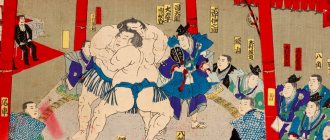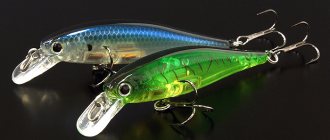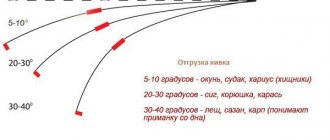Japanese martial arts involve violent strikes and quick throws. Sumo looks very different, but remains the favorite sport of the Japanese people.
According to Shinto myths, the first sumo match took place between the gods of thunder and wind when they divided the lands of Japan. The lord of lightning won, and became the patron saint of the country.
The first competition among mortals took place, according to legend, in 23 BC. e. A giant arrived at the imperial court, declaring that he would fight anyone who wanted it. The ruler of Japan announced a reward for the one who defeats the giant. The mighty fighter Nomi no Sukune defeated the uninvited guest with his bare hands, receiving rich possessions and a place at the emperor’s court for this. After his death, Sukune became the patron god of sumo.
Nomi no Sukune to photo Source: wikipedia.org
The first historically recorded sumo tournament took place in 642. The rules then were very different from today. Ritual dances turned into fights without rules. Often the fights ended in the death of one of the fighters. Gradually, a set of rules for sumo developed, and it turned into something like a show at the imperial court.
Japanese wrestling: a battle between tradition and progress
Several centuries later, a set of exercises for samurai appeared based on sumo. What was once a ritual dance became a training course for warriors. With the transition of power in Japan to the shoguns, sumo became a popular entertainment at festivals and fairs. Often noble feudal lords sponsored sumo wrestlers they especially liked, who were traditionally called rikishi. If a wrestler continued to be in favor with his patron, then he could even count on the samurai title.
The great shogun Oda Nobunaga was a sumo fan. He loved watching wrestling so much that in 1578 he held a tournament for one and a half thousand wrestlers in his castle. Due to the huge number of participants, they decided to greatly limit the space for the battles so that the ruler could watch several fights at the same time. This is how traditional sumo grounds, dohyo, appeared.
But not all rulers were so supportive of the ancient sport. In the 1600s, during the Edo period, sumo was banned. The reason was mass unrest at fairs: the Japanese turned out to be too passionate fans, and fights constantly broke out between spectators. The ban was partially lifted only in 1684, when representatives of the highest Shinto clergy were able to prove to the shogun that sumo was not only entertainment for the amusement of the public, but also an important religious rite. In the same year, the first official tournament in more than a century was held.
To avoid new unrest, the shogun ordered the development of stricter rules for sumo and the creation of an organization that united wrestlers. To be able to perform at the dohyo, membership in the “workshop” was mandatory. Returning to the ancient Shinto roots, sumo has again become overgrown with rituals.
For example, it was during the Edo period that the ceremony of wrestlers entering the dohyo was officially established, and judges’ costumes, reminiscent of priestly robes, appeared. According to the new rules, the winner was determined by professional judges, and not by the highest-ranking spectator, as before.
Yokozuna Belt. Source: pinterest.com
The emergence of a rank system for wrestlers also dates back to this period. In total, rikishi are divided into six divisions: from beginners to the most successful professionals. Each division has its own divisions. At the very top of the multi-step ladder are the yokozuna - the great champions.
Literally, this title means "wearer of the rope" - in honor of the special belt that champions wear as a sign of their status. Each belt, which looks like a thick rope, weighs about 20 kg. It is made according to the model of sacred fences in Shinto shrines.
11th and 13th yokozuna, 1866. Source: en. wikipedia.org
After the Meiji Restoration in 1868, sumo again fell into decline. Firstly, because with the departure of the old feudal lords and shogunal courtiers from the political scene, the fighters lost their sponsors. And secondly, when the period of closed borders ended, the Japanese began to consider sumo an anachronism that had no place in a rapidly changing world.
Emperor Meiji personally saved the ancient sport. In 1884, he held an all-Japan tournament and announced that he considered this fight a national symbol. After such words from the emperor, the popularity of sumo skyrocketed. The Japan Sumo Association was officially registered on December 28, 1925, and since then all tournaments have been held under its patronage.
Appearance of sumotori
The attire and hairstyle of a sumotori (sumo wrestler) is strictly regulated.
Mawashi clothing
The only acceptable clothing a wrestler can wear during a match is a mawashi.
It is a fabric ribbon (the width and length can be any) so that it can be made five turns around the naked body and between the legs, the end of the belt is fixed with a knot. A poorly tied mawashi that comes undone during the match will result in the rikishi being disqualified. Wrestlers in the highest divisions wear silk mawashi and decorative ornaments (sagari) are hung from it. Yokozuna and ozeki have an additional belt; it looks like an apron and is called kesho-mawashi. It is used only in the ritual part of the tournament. During rituals, yokozuna wear, in addition to kesho-mawashi, another decorative ornament - a rope woven in a special way, which is called tsuna or shimenawa.
Hairstyle
Wrestlers collect their hair at the back of their heads in a certain way. A high bun helps soften the impact of a fall. Dressing hair in such an archaic way is a special art that has been preserved in sumo culture and traditional theater.
Sumo rules: a lot of restrictions and unlimited weight
Modern sumo is a sport with very strict rules. According to them, the one who either leaves the dohyo or touches the ground with something other than his feet loses. The diameter of the wrestling area is 4.55 meters and is limited by a thick rope. Kicking, punching, choking, and much more are prohibited. The main techniques of sumo fighting are grabbing the opponent's belt, open palm strikes and throws. Much of the modern fighting technique comes from other martial arts, especially judo.
The rules of the fights depend on the rank of the wrestlers. In the top division, participants go to the fight site in bright clothes and throw handfuls of salt onto the dohyo, thereby ritually cleansing it. After this, the wrestlers begin warming up, the sequence of movements of which has also long been fixed. The duration of preparation for a fight depends on the rank of the wrestlers. In the top division it takes four minutes.
Sumo fight. Source: en.wikipedia.org
After the rituals are over, the combatants take their places on the starting lines, touching the ground with their fists. At the referee's signal, the fight begins. The round lasts four minutes. If during this time the winner has not yet been determined, then a break is announced, after which the wrestlers must continue from positions as close as possible to those in which they finished the round.
If the winner is not determined in another four minutes, then after the second break the rikishi will begin the battle from the starting positions. The third round is always the last. If after this the winner is not identified, then a draw is declared. This is a very rare occurrence. The last time this happened in professional sumo was in September 1974. Usually fights go much faster and end in one round.
There are currently about 700 sumo wrestlers in Japan. According to the Federation's requirement, introduced in 1994, athletes must be at least 173 cm tall. This rule led to a curious situation when one young rikishi, who had not grown to the standard, turned to plastic surgeons. They extended his head by placing a 15 cm thick silicone pillow on his skull.
It did not help. The Federation made a categorical decision that wrestlers who have artificially increased their height will not be accepted due to concerns for their health. In 2021, growth standards were relaxed. Now those who have grown to 167 cm and weigh 67 kg have a chance to become a rikishi. There are no weight categories in sumo. A person weighing less than 100 kg can compete against a 200-kilogram wrestler.
Sumo wrestlers always perform under pseudonyms. If previously names associated with religion were used, now coaches or sponsors choose pseudonyms according to their taste. When a wrestler achieves certain successes and rises in the ranks, he has the right to change his “stage name” if he wants.
The life of wrestlers is very limited by a strict set of rules. It is described point by point how a rikishi should dress depending on his rank. For example, wrestlers from the lower divisions, even in winter, are prohibited from appearing in public in anything other than a yukata - a thin robe. Hairstyles and menus are regulated. The main food for rikishi is chankonabe - a stew of fish, various types of meat, tofu and vegetables, cooked in a pot. This ancient dish is prepared according to the recipes of traditional Japanese cuisine. However, during tournaments, only the chicken version is served. This is explained simply: the wrestler must stand on two legs, and not on four, like a cow or ram.
New prohibitions are regularly added to the list of rules. Today, for example, wrestlers are prohibited from driving. True, most rikishi would not be able to fit into the driver’s seat normally anyway. Violation of any of the prohibitions may result in fines, demotion in rank, or even lifelong disqualification.
Moreover, no exception is made even for champions. For example, in 1949, yokozuna received a lifetime ban from fighting for attending a baseball match during a sumo competition in which he did not even participate due to injury. The rules ordered him to either attend the tournament or undergo treatment.
Munkhbatyn Davaazhargal, one of two active yokozuna. Source: en.wikipedia.org
Recently, more and more foreign wrestlers have been coming to sumo, especially from Mongolia. Many people attribute this to the fact that national Mongolian wrestling is similar in rules to sumo. The inhabitants of the steppes are very successful in using their skills on the Japanese Islands. At the beginning of 2021, there are two yokozuna in Japan, and both of them are from Mongolia. In the top division of 42 people there are five Mongols, a Bulgarian, a Georgian and a Brazilian. The rest are Japanese.
There were also residents of Russia among the sumo wrestlers. Thus, the heaviest in the entire history of this sport was Anatoly Mikhakhanov from Buryatia, who performed under the pseudonym Orora Satoshi. With a height of 193 cm, he weighed 293 kg. But his sporting achievements for such dimensions were quite modest - he did not reach the two top divisions.
The only ethnic Russian professionally trained in sumo is Nikolai Ivanov, who, under the pseudonym Amuru Mitsuhiro, reached the major league and entered the top 20 best wrestlers in 2015. However, he does not at all look like a stereotypical fat man. With a height of 192 cm, in his peak form he weighed 126 kg.
Nikolai Ivanov on dohyo. Source: wikipedia.org
Although sumo is the Japanese national symbol, other nations are also gradually mastering this type of wrestling and are very successful. Perhaps someday the dream of some Japanese science fiction writers will come true, and sumo will even be included in the Olympic program.
Shinto symbols on the arena and the area around it
| Sand in the arena is a symbol of purity | |
| The salt that the fighters scatter symbolizes purification, as well as the expulsion of evil | |
| Yakata - the canopy over the arena follows the outline of the roof of a Shinto shrine. The tassels at the corners of the canopy are symbols of the seasons: white - autumn, black - winter, green - spring, red - summer. The purple flags around the roof symbolize the movement of clouds and the change of seasons. | |
| Gyoji, acts both as a judge and as a Shinto cleric. He is dressed in attire that is consistent with a Muromachi era courtier. A mandatory attribute of a gyoji is a clumsy fan (gumbai), with which he points to the winning side after the end of the fight. Judges, like wrestlers, have ranks. Their clothing and footwear are strictly regulated - in the minor leagues, referees are barefoot and have simple attire. At the main tournaments, high-ranking gyoji watch the sumotori fight - in addition to richly decorated attire, they are allowed to wear socks and sandals. |
Sumo tournament schedule in 2021
| Dates | Where | Start of ticket sales | Announcement of ranks |
| 12-26.01.2020 | Kokugikan (Tokyo) | 7.12.2019 | 24.12.2019 |
| 08-22.03.2020 | EDION Arena (Osaka) | 2.02.2020 | 24.02.2020 |
| 10-24.05.2020 | Kokugikan (Tokyo) | 4.04.2020 | 27.04.2020 |
| 05-19.07.2020 | DOLPHINS ARENA (Nagoya) | 23.05.2020 | 22.06.2020 |
| 13-27.09.2020 | Kokugikan (Tokyo) | 1.08.2020 | 31.08.2020 |
| 08-22.11.2020 | Kokusai Center (Fukuoka) | 19.09.2020 | 26.10.2020 |
Chanko-nabe Restaurants
Chanko nabe
is a hot dish made from many ingredients: vegetables, seafood and meat. Its peculiarity is the cooking process - all ingredients are boiled in one pan. There are many restaurants in Tokyo and especially in the Ryugoku area where chanko nabe is their specialty.
Some restaurants have dohyo, such as Ryogoku Happyakuyacho Hananomai Edo Tokyo Museum Mae
, where visitors can climb up to take photos.
These restaurants are owned by former sumo wrestlers, sometimes they are even chefs, such as at Kotogaume
.
Types of places
There are three main groups of seats available in all arenas:
- Places near dohyo -
seats located closest to the ring and representing a pillow lying on the floor. They also have potentially high risk factors, as wrestlers are sometimes thrown from the ring into the crowd.These places have restrictions: you can't eat, drink, take pictures or use a cell phone. - Boxes
- Small (1.5 m²) space with floor cushions for 1-4 people. Photography and eating are permitted. All seats in a box must be paid for, regardless of the number of people, for example, if you buy seats in a box for 4 people, but two people will sit in them, then you pay for four seats, i.e. the cost of the entire box. - Places on chairs
are located on the second floor. They are ideal if you want to see the match from a bird's eye view. These seats are also the cheapest to book in advance.
| Please note that in order to have a good view, you must take seats near the dohyo or in the box, which means that you will have to sit on the floor. If you are not used to sitting on the floor for long periods of time, you may want to bring extra pillows to make you more comfortable. |
Buying tickets to the sumo championship
Places near dohyo
These seats are not available for free sale; those wishing to purchase tickets for these seats leave applications, and the lucky ones are determined by a lottery. Thus, it is very difficult to get a place near the dohyo. It is worth noting that even in the lottery, not all places are included, but only a part, since some places are provided to sponsors.
Stocks (boxes)
Lodges can be for 1, 2, 3 and 4 people. By purchasing tickets for these seats, you pay the entire cost of the box. Thus, a person can buy a box for 4, but sit alone. Lodges are reserved seating. Tickets must be purchased in advance, on the day sales start. They are not sold at the box office on competition day.
Seating on chairs
There are two types of chair seats: reserved and non-reserved. Reserved seats on chairs, as well as seats in the box, must be purchased in advance - on the day the sales start. Non-reserved chair seats are sold only at the box office on tournament days. These are the cheapest tickets. Therefore, those wishing to purchase them gather long before the box office opens. Please note the special algorithm for purchasing these tickets:
- You need to come to the arena, take a turn;
- You will be given a number - you can only buy one ticket with it;
- Payment is possible only in cash;
- If you are going in a group, then everyone must stand in line and everyone must have their own number.
Non-reserved seats are any free seat in the sector indicated on the ticket. If you leave, your place may be taken.
Sumo tournament schedule for 2021
| Dates | Where | Start of ticket sales | Announcement of ranks |
| 10-24.01.2021 | Kokugikan (Tokyo) | 05.12.2020 | 24.12.2020 |
| 14-28.03.2021 | EDION Arena (Osaka) | 07.02.2021 | 01.03.2021 |
| 09-23.05.2021 | Kokugikan (Tokyo) | 10.04.2021 | 26.04.2021 |
| 11-25.07.2021 | DOLPHINS ARENA (Nagoya) | 22.05.2021 | 28.06.2021 |
| 12-26.09.2021 | Kokugikan (Tokyo) | 07.08.2021 | 30.08.2021 |
| 14-28.11.2021 | Kokusai Center (Fukuoka) | 18.09.2021 | 01.11.2021 |
Attending training at the stables, Tokyo
To begin training, aspiring wrestlers join a stable known as a heya.
Each heya is controlled by an oyakata, a retired sumo wrestler. Junior rikishi are responsible for all day-to-day tasks such as cleaning, cooking, and preparing the practice ring. There are especially many heya in Tokyo's Ryugoku district. It is important to know that heya are not tourist attractions with free entry, they are primarily educational institutions. There are a limited number of schools that can be visited, but it is mandatory to have a Japanese chaperone for the group who speaks fluent Japanese and is well versed in sumo culture. You can only attend training if you fully comply with the rules.
| Under no circumstances should you interfere with the progress of your workout. Keep in mind that training takes on average 2-3 hours, and all this time you will have to sit statically on the floor. |
It is almost impossible for foreigners to visit the heya on their own. It is optimal to join an organized group. These excursions typically cost around 10,000 yen per person and around 4,000 yen per person for a group visit. You can always watch the training through the window. This option is free.











